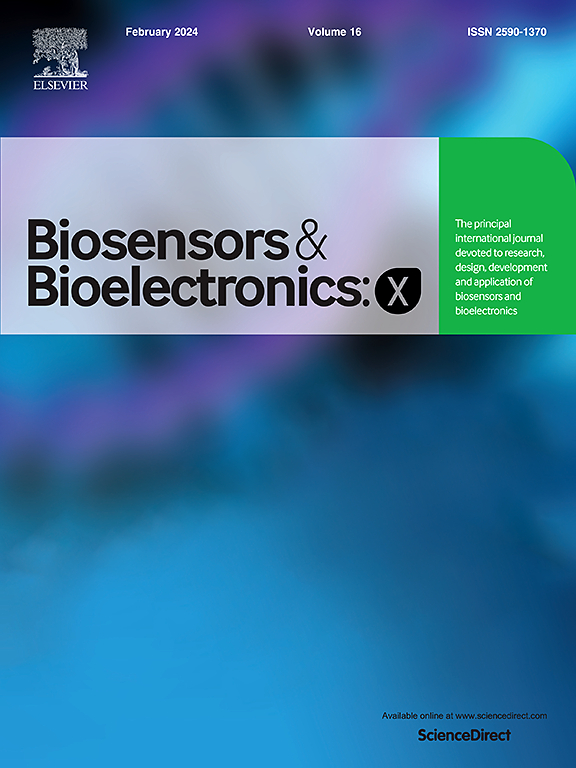一种内置多向传感和无线负荷监测的智能髋关节植入物,用于增强骨科护理
IF 10.61
Q3 Biochemistry, Genetics and Molecular Biology
引用次数: 0
摘要
本研究介绍了一种智能全髋关节置换术(THR)系统的开发、集成和实验验证,该系统结合了压电负载传感、能量收集和无线数据传输。该植入物在股骨头中嵌入了7个压电传感器,利用有限元分析(FEA)进行战略性定位,以识别步态中的高应变接触区。定制的凸轮驱动台式装置模拟了步行(2hz)、慢跑(3hz)和跑步(4hz)频率下的循环载荷,以评估传感器系统在生理相关条件下的性能。结果证实,植入物能够捕捉局部载荷变化,具有高空间保真度和可重复性,因为传感器输出与动态试验中的施加力密切相关。建立了均方根电压负载曲线和校准曲线,实现了传递关节力的精确量化。此外,收集到的信号显示出足够的功率输出用于无线通信和潜在的机载功能,将该设备定位为一个自我维持的生物力学监测仪。这个多功能平台代表了骨科种植体技术的重大进步,提供实时的、体内的种植体负荷评估,以支持个性化的康复策略、早期失效检测和长期的术后护理。本文章由计算机程序翻译,如有差异,请以英文原文为准。
A smart hip implant with embedded multidirectional sensing and wireless load monitoring for enhanced orthopedic care
This study presents the development, integration, and experimental validation of a smart total hip replacement (THR) system that combines piezoelectric load sensing, energy harvesting, and wireless data transmission. The implant incorporates seven piezoelectric sensors embedded within the femoral head, strategically positioned using Finite Element Analysis (FEA) to identify high-strain contact zones during gait. A customized cam-driven benchtop setup simulated cyclic loading at walking (2 Hz), jogging (3 Hz), and running (4 Hz) frequencies to evaluate the sensor system under physiologically relevant conditions. The results confirmed the implant’s ability to capture localized load variations with high spatial fidelity and repeatability, as sensor output correlated strongly with applied force across dynamic trials. RMS voltage-load profiles and calibration curves were established, enabling accurate quantification of transmitted joint forces. Additionally, the harvested signals demonstrated sufficient power output for wireless communication and potential onboard functionality, positioning the device as a self-sustained biomechanical monitor. This multifunctional platform represents a significant advancement in orthopedic implant technology, offering real-time, in vivo assessment of implant loading to support personalized rehabilitation strategies, early failure detection, and long-term postoperative care.
求助全文
通过发布文献求助,成功后即可免费获取论文全文。
去求助
来源期刊

Biosensors and Bioelectronics: X
Biochemistry, Genetics and Molecular Biology-Biophysics
CiteScore
4.60
自引率
0.00%
发文量
166
审稿时长
54 days
期刊介绍:
Biosensors and Bioelectronics: X, an open-access companion journal of Biosensors and Bioelectronics, boasts a 2020 Impact Factor of 10.61 (Journal Citation Reports, Clarivate Analytics 2021). Offering authors the opportunity to share their innovative work freely and globally, Biosensors and Bioelectronics: X aims to be a timely and permanent source of information. The journal publishes original research papers, review articles, communications, editorial highlights, perspectives, opinions, and commentaries at the intersection of technological advancements and high-impact applications. Manuscripts submitted to Biosensors and Bioelectronics: X are assessed based on originality and innovation in technology development or applications, aligning with the journal's goal to cater to a broad audience interested in this dynamic field.
 求助内容:
求助内容: 应助结果提醒方式:
应助结果提醒方式:


